Thin Blue Line Flag Sparks Debate in Brea
A Thin Blue Line flag towers above Downtown Brea. The flag, purchased by Brea resident and developer Dwight Manley (’84), sparked a debate in the community about the flag’s connotations.
A large Thin Blue Line flag was raised in the center of Downtown Brea on Sept. 17, stirring debate in the Brea community.
Brea resident and developer Dwight Manley (‘84) installed the flag atop the empty Farrell’s Ice Cream Parlor at the corner of Birch Street and Brea Blvd. as a “respectful” way to honor two Sheriff’s deputies that were shot in Compton on Sept. 15, and as a tribute to the Brea police department, Manley said in an interview with the Wildcat.
“We are blessed to have a great department in Brea,” Manley continued. “They went to work everyday on our behalf during the worst weeks of COVID.”
But some Brea residents, like Haylie Kent, junior, thought the raising of the flag was “extremely disrespectful” due to the flag’s “hateful” connotations. Kent noted that the flag was planted “in the same spot where a protest for equality took place,” a reference to a Black Lives Matter rally held in Downtown Brea on June 2.
Gracie Jean Wilson (‘20) believes that the flag is a negative representation of Brea: “The Black Lives Matter protest that was held near where the flag is was peaceful. It seemed as if marginalized voices were finally being heard, but [the Thin Blue Line] flag is a huge step backward.”
Other Brea residents, like Crepes De Paris employee Karel Camacho, thinks the flag “shows that Brea is a community that cares about” its police department, and that Brea is “a strong community.”
Sophomore Keely Hunt asked, “Since when did it become a problem to honor the people who risk their lives daily for the people?”
The source of the controversy — the Thin Blue Line flag — was created in 2014 by college student Andrew Jacob, who wanted to “give the police a flag to wave,” according to Harper’s Magazine. In an interview with The Marshall Project, Jacob said, “The flag has no association with racism, hatred, bigotry. It’s a flag to show support for law enforcement.”
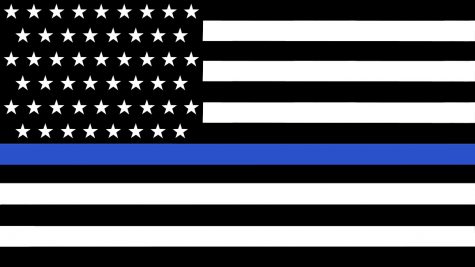
Yet when the flag began to appear “among the Confederate flags toted by the white supremacists and neo-Nazis during the violent protests,” at Charlottesville, Va. in 2017, the flag became a political “symbol of racism” and a “counterforce to Black Lives Matter,” according to USA Today.
Supporters of BLM believe that the flag “connotes opposition to ending police brutality and systemic racism,” according to NPR, while supporters of Blue Lives Matter believe the flag to be “a line between law and order [and a] show of police pride and solidarity.”
Attention to the Downtown Brea flag-raising was amplified when the @brea.downtown Instagram account posted a video of the flag, with the words “#breastrong” and “Brea Downtown Supports Law Enforcment,” on Sept. 17. The post generated over 17,900 views and 4,750 comments in five days.
The comments are split between supporters of Black Lives Matter, who claim the flag “is belittling to [BLM], a cause worth backing up,” according to Elaine Ahn, junior, and supporters of Blue Lives Matter, like Nate Melendez, junior, who believe that the flag shows “respect to the cops in this town.”
“Unfortunately, some are using this as a wedge to force people to ‘choose sides,’” Manley acknowledged.
Some of the comments on Instagram either attacked or applauded the city’s role in the flag’s presence; however, because the Downtown Brea property is privately owned, the City of Brea has no say on what is put up, or taken down, in the area. “We are not the agency that put the flag up,” Heidi Gallegos, President of the Brea Chamber of Commerce, said.
“The property owner has a First Amendment right” to raise the symbol, Marty Simonoff, mayor of Brea, said, “and the City cannot restrict anyone from displaying a flag based on the content or viewpoint that is expressed.”
In a poll on the Wildcat website that asked “What is your stance on the raising of the flag?”, the 208 voters are almost evenly split between approval (40%) and disapproval (37%) of the flag, reflecting the community’s divide on the issue. (14% voted “don’t care” and 9% are “conflicted.”)
In response to those Brea residents who oppose the Thin Blue Line flag’s highly visible location in the city’s center, like sophomore Gabrielle Smith, who believes “that flag is a daily reminder” of oppression, Manley said, “Respecting [the police department] in no way takes away from any other person or cause. I’m happy to fly their BLM flag on the other downtown flagpole if they want to purchase it.”
Your donation supports the student journalists at Brea Olinda High School! The contribution will help us purchase equipment, upgrade technology, and cover our annual website hosting costs.

Doyon Kim, senior, is the Editor-in-Chief of the Wildcat, and this is her fourth and last year on staff. She loves binge-watching TV shows during her free...
Isabella Abalos, senior, is ecstatic about returning for her third year as one of the Photo Managers for the Wildcat. She enjoys going to the...
Charlize Chiang, senior, is a Photo Manager and Illustrator for the Wildcat and returns for her third year on staff. She competes for varsity tennis, and...


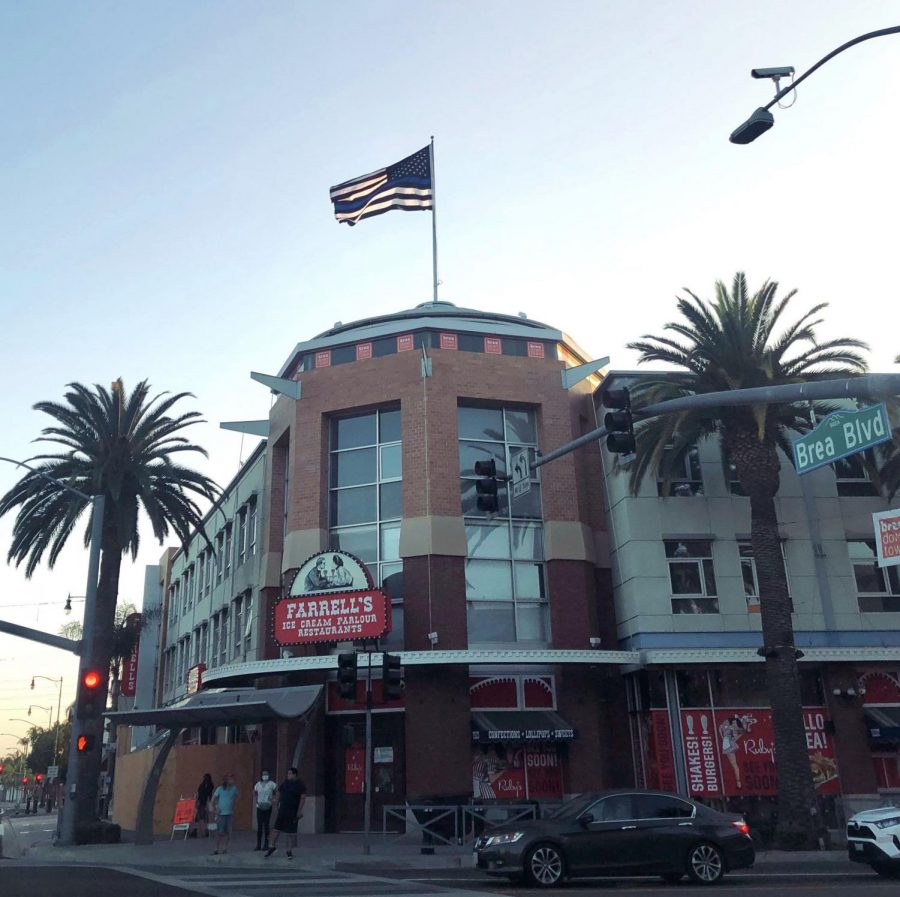
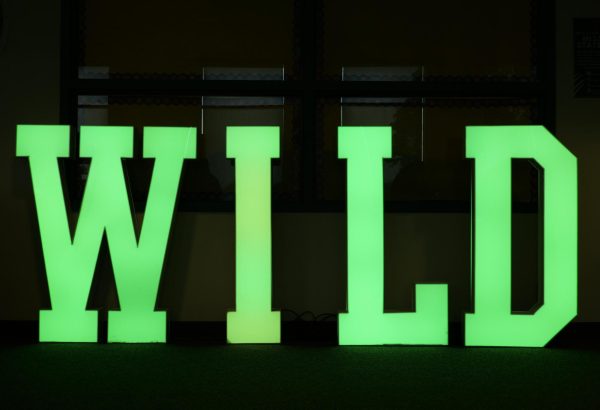

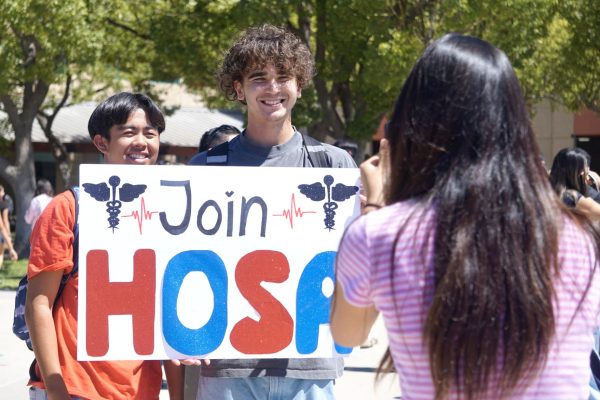
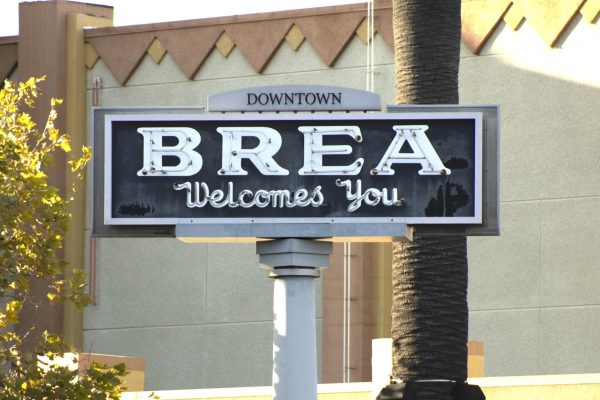
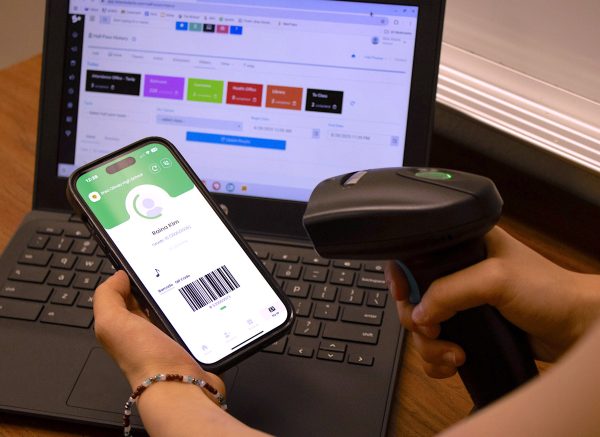
Travis • Nov 9, 2020 at 8:29 am
I would like to take Dwight up on the offer for the BLM flag please. Let me know if I need to deliver the flag to him or how that should go.
Thanks.
Greg Diamond • Sep 25, 2020 at 4:24 pm
Two questions about that flag:
First, why are there 51 stars? Does it support DC statehood?
Second, if the blue line is separating order from chaos, is “order” on the top or the bottom?
As for “Black Lives Matter,” the full slogan should be “Black Lives Matter JUST AS MUCH!” Our society does not act as if they do. (One obvious example: self-described militias composed of whites are generally tolerated or even celebrated; self-described militias composed of Blacks are broken up and arrested (or worse.)
I’d be happy to agree that Blue Lives Matter Just as Much — but that’s not what the police want! They want (and get) EXTRA protections for Police — look up the Police Officers Bill of Rights, which insulates them from criminal and even civil liability for illegal acts — and of course killing Or assaulting an officer (even one in plainclothes breaking into your home at night, as with Brianna Taylor) carries with it extra criminal penalties, as does failing to obey an even questionably “lawful” order.
So the hierarchy in our current society is that Blue Lives Matter most, then White Lives (unless they’re protesting the police), and then Black (and most other racial/ethic minority) Lives. Flying this parody of the American flag is celebrating that social order. If Manley flew a flag that said “Support Your Local Police,” it would be less offensive, in that it wouldn’t falsely assert that in our society “Blue Lives” currently matter less.
Rick Clark • Sep 25, 2020 at 2:55 pm
Given the volatility of this topic when first introduced on Instagram I am surprised there is no discussion here. “Old Glory” is back where she originally flew, never abandoned, never dismissed. I suspect the “Thin Blue Line” flag is poised to return when it is felt to be appropriate. The offer to fly the banners of other organized, legitimate ideologies has ben extended. This seems to suggest that our downtown is a free speech zone deserving of the respect of all.
ELEANOR JIMENEZ • Sep 25, 2020 at 10:08 am
Our police put there lives on the line every day. Its not a political statement. Its a show of support for our com.munity and our men in blue.